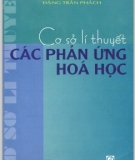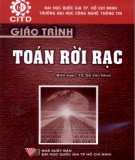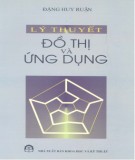Tài liệu Thư viện số
- Tài liệu nội sinh (139 )
- Tạp chí Đại học Cửu Long (28 )
- Danh mục sách mới (12 )
- Luật Kinh tế (346 )
- Mỹ thuật công nghiệp (164 )
- Khoa học Sức khỏe (698 )
- Quản trị kinh doanh (1415 )
- Nông nghiệp (1522 )
- Ngoại ngữ - Đông phương (667 )
- Ngữ văn (983 )
- Công nghệ thông tin (1115 )
- Kỹ thuật công nghệ (1239 )
- Kinh tế (1148 )
- Khoa cơ bản (775 )
- Lý luận chính trị (1099 )
- Luận văn báo cáo (61 )
- GD thể chất & Quốc phòng (283 )
- Tài liệu tham khảo (164 )
Danh mục TaiLieu.VN
- Mẫu Slide Powerpoint
- Luận Văn - Báo Cáo (344720)
- Kinh Doanh Marketing (65512)
- Kinh Tế - Quản Lý (48934)
- Tài Chính - Ngân Hàng (55898)
- Công Nghệ Thông Tin (142209)
- Tiếng Anh - Ngoại Ngữ (47066)
- Kỹ Thuật - Công Nghệ (134345)
- Khoa Học Tự Nhiên (107174)
- Khoa Học Xã Hội (82451)
- Văn Hoá - Nghệ Thuật (54408)
- Y Tế - Sức Khoẻ (173915)
- Nông - Lâm - Ngư (62504)
- Kỹ Năng Mềm (29016)
- Biểu Mẫu - Văn Bản (27610)
- Giải Trí - Thư Giãn (51994)
- Văn Bản Luật (198854)
- Tài Liệu Phổ Thông (402015)
- Trắc Nghiệm Online (213578)
- Trắc Nghiệm MBTI
- Trắc Nghiệm Holland
Tài liệu nổi bật
Kết quả 757-768 trong khoảng 775
-
Chapter 7: Principles of Radiation and Antenna
A tremendous amount of knowledge and information has been gained about the design of antennas and radio-wave propagation. Still, many old-time technicians will tell you that when it comes to designing the length of an antenna, the best procedure is to perform all calculations and try out the antenna. If it doesn't work right, use a cut-and-try method until it does.
31 p mku 10/10/2012 410 1
-
A waveguide is a structure which guides waves, such as electromagnetic waves or sound waves. There are different types of waveguides for each type of wave. The original and most common[1] meaning is a hollow conductive metal pipe used to carry high frequency radio waves, particularly microwaves.
39 p mku 10/10/2012 356 1
-
Chapter 5: Theory and Applications of Transmission Lines
Presents the latest methods for properly considering transmission line effects as well as the calculation of transmission line properties as a function of materials and geometries. Emphasizes properties of stripline and microstrip circuits, explaining that at high enough frequencies, almost every interconnection in a circuit will exhibit transmission line properties. . , that, if these circuits are to be well designed, the transmission lines...
57 p mku 10/10/2012 387 1
-
EM-Ch4_1 3 a) Introduction to Time Varying Fields Electric charges induce electric fields and electric current iduce magnetic fields. the cases for magnetostatic and electrostatic where the magnetic field and the electric field are constant with time. In the magnetostatic and electrostatic cases, the E and D fields are independent of B and H fields.
51 p mku 10/10/2012 387 1
-
Chapter 3: Magnetostatic Fields
Magnetostatics is the study of magnetic fields in systems where the currents are steady (not changing with time). It is the magnetic analogue of electrostatics, where the charges are stationary. The magnetization need not be static; the equations of magnetostatics can be used to predict fast magnetic switching events that occur on time scales of nanoseconds or less.[1] Magnetostatics is even a good approximation when the currents are not...
40 p mku 10/10/2012 468 1
-
An electric field is the region of space surrounding electrically charged particles and time-varying magnetic fields. The electric field depicts the force exerted on other electrically charged objects by the electrically charged particle the field is surrounding. The concept of an electric field was introduced by Michael Faraday.
67 p mku 10/10/2012 295 1
-
Electric fields are created by differences in voltage: the higher the voltage, the stronger will be the resultant field. Magnetic fields are created when electric current flows: the greater the current, the stronger the magnetic field. An electric field will exist even when there is no current flowing. If current does flow, the strength of the magnetic field will vary with power consumption but the electric field strength will be constant.
77 p mku 10/10/2012 329 1
-
In vector calculus, a vector field is an assignment of a vector to each point in a subset of Euclidean space.[1] A vector field in the plane, for instance, can be visualized as a collection of arrows with a given magnitude and direction each attached to a point in the plane. Vector fields are often used to model, for example, the speed and direction of a moving fluid throughout space, or the strength and direction of some force, such as the...
92 p mku 10/10/2012 376 1
-
Là công cụ không thể thiếu được trong hoạt động nghiên cứu và công tác thực tiễn, cho nên thống kê đã trở thành một môn học cần thiết trong hầu hết các ngành đào tạo. Trong các chuyên ngành khối kinh tế - xã hội. Lý thuyết thống kê là một môn học cơ sở bắt buộc có vị trí xứng đáng với lượng thời gian đáng kể. Cùng với chính sách mở...
169 p mku 05/10/2012 396 2
-
Theo nghĩa đơn giản, kinh tế lượng, liên quan đến việc áp dụng các phương pháp thống kê trong kinh tế học. Không giống như thống kê kinh tế, trong đó các dữ liệu thống kê là chính yếu, kinh tế lượng được phân biệt bằng sự hợp nhất của lý thuyết kinh tế, công cụ toán học và các phương pháp luận thống kê..
552 p mku 05/10/2012 324 1
-
Kinh tế lượng (econometrics) là một bộ phận của Kinh tế học, được hiểu theo nghĩa rộng là môn khoa học kinh tế giao thoa với thống kê học và toán kinh tế. Hiểu theo nghĩa hẹp, là ứng dụng toán, đặc biệt là các phương pháp thống kế vào kinh tế. Kinh tế lượng lý thuyết nghiên cứu các thuộc tính thống kê của các quy trình kinh tế lượng, ví dụ...
71 p mku 05/10/2012 331 1
-
Phương pháp luận truyền thống, còn gọi là phương pháp luận cổ điển, một nghiên cứu sử dụng kinh tế lượng bao gồm các bước sau: Phát triển lý thuyết hoặc giả thuyết. Xác định đặc trưng của mô hình kinh tế lượng cho lý thuyết hoặc giả thuyết. xác định đặc trưng của mô hình kinh tế lượng cho lý thuyết hoặc giả thuyết....
79 p mku 05/10/2012 418 4
Đăng nhập
Bộ sưu tập nổi bật
-

10 11046
-

13 10978
-

12 10179
-

Bộ sưu tập Kỹ thuật công trình
12 12150
-

Bộ sưu tập Quản trị kinh doanh
13 9400
-

Bộ sưu tập Công nghệ Thông tin
12 9346
-

14 10608


















